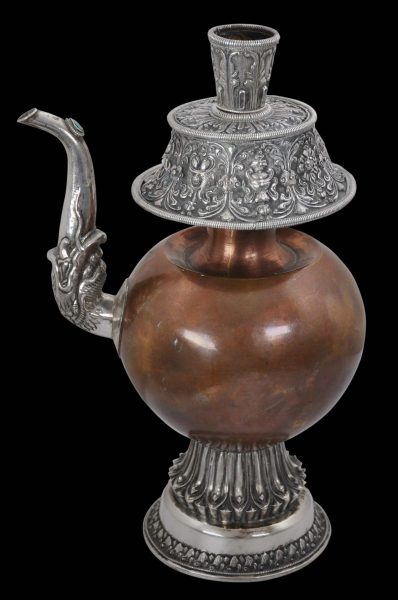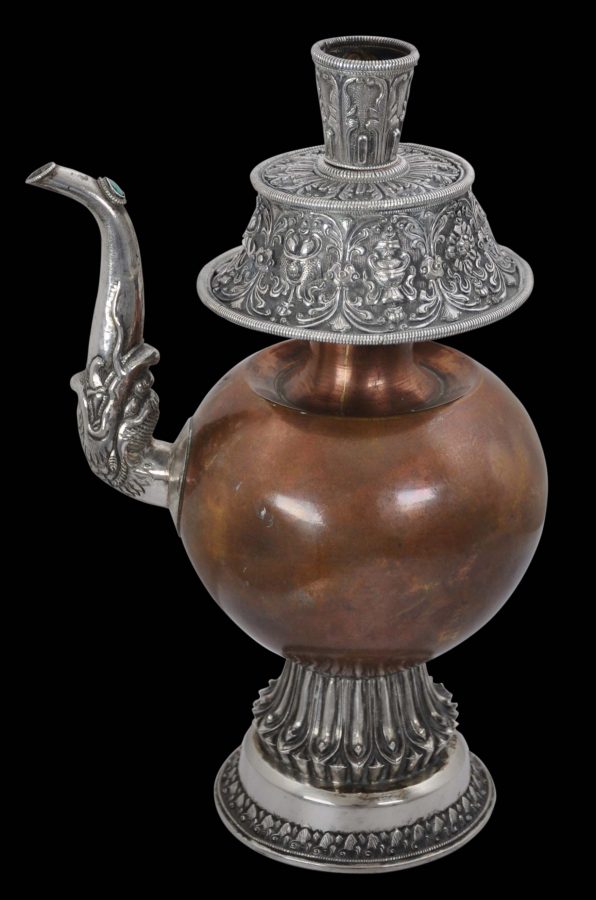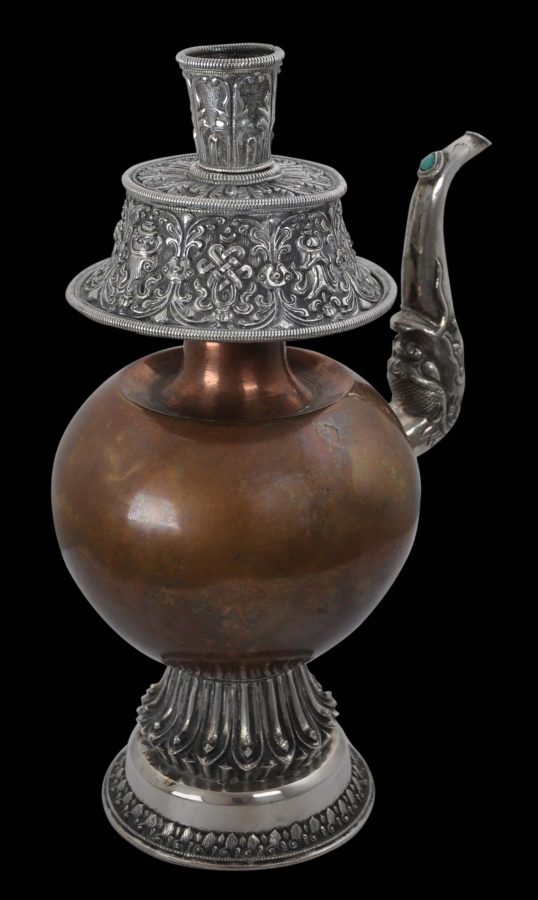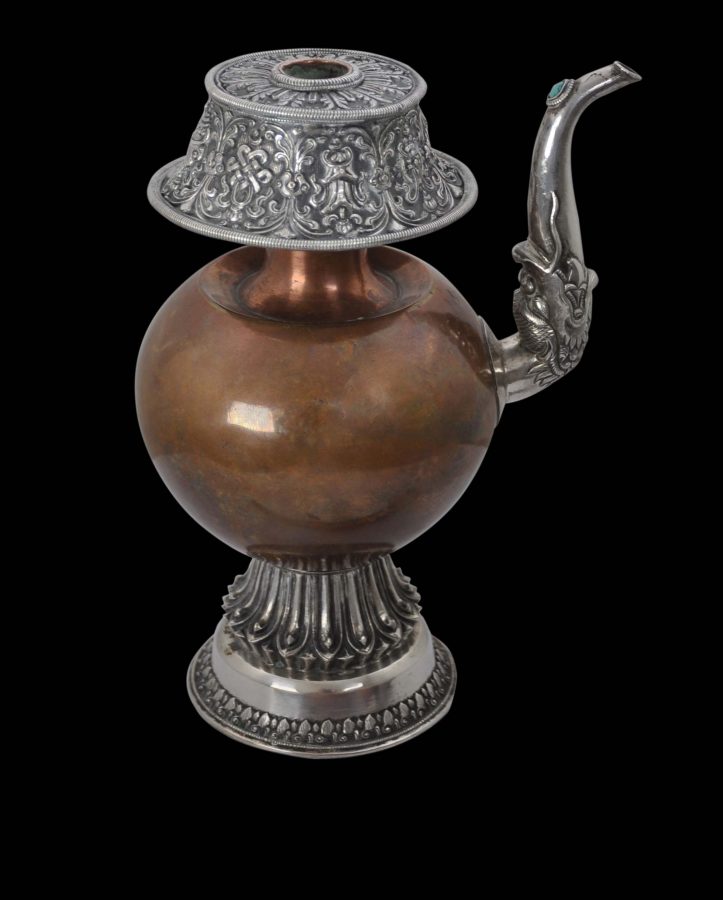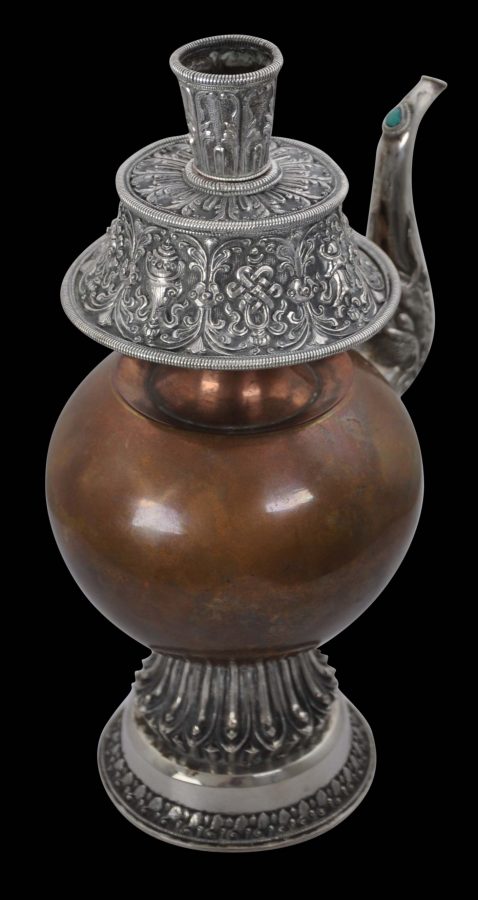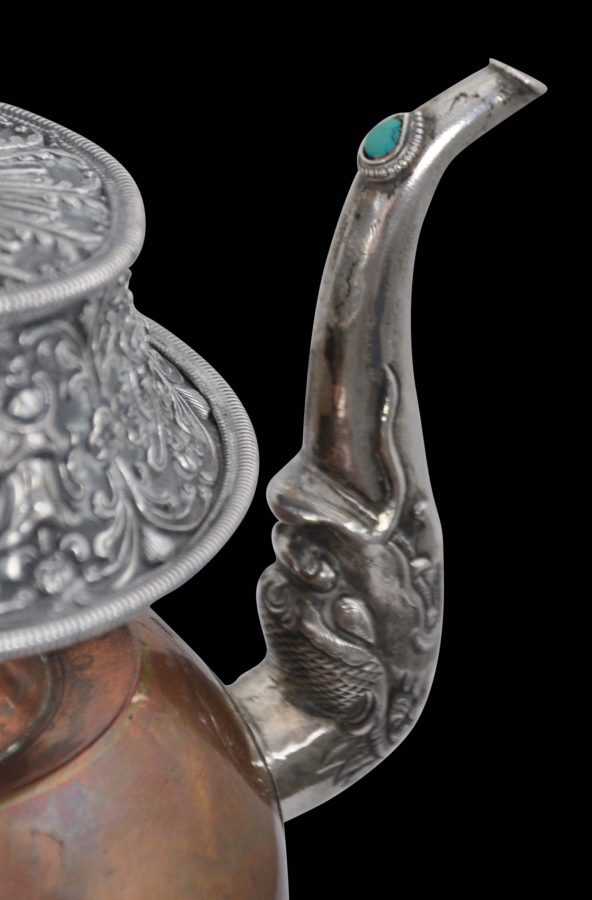This elegant vase was used to hold sacred or blessed water and is most associated with the deity Amitayus, the Buddha or immortal life. It could be held as an attribute or placed on an altar as an offering. The blessed water could also be used in initiation and other purification rituals.
Peacock feathers often were placed in the vase to signify the destruction of spiritual poison.
Such vases have a stupa-like shape suggesting their religious connection, as do the copper bodies which are suggestive of monks’ begging bowls in form.
The body of this example is of hammered copper, with chased silver mounts. A hollow, conical stopper is inserted into the mouth of the vase. It is into this that the peacock feathers were placed.
The spout emerges from a makara. A turquoise cabochon is mounted in a box setting towards the end of the spout. Turquoise was believed to absorb poison and help purify the water emerging from the vessel.
The silver collar is chased in high relief with Buddhistic symbols amid foliate scrolls. The silver encased foot is decorated also in high relief with lotus petals.
The vase is in fine condition. There is an age-related dent to the copper body.
References
Pal, P., Art of Tibet, Los Angeles County Museum of Art, 1990.
Thurman, R., & D. Weldon, Sacred Symbols: The Ritual Art of Tibet, Sotheby’s/Rossi & Rossi, 1999.


